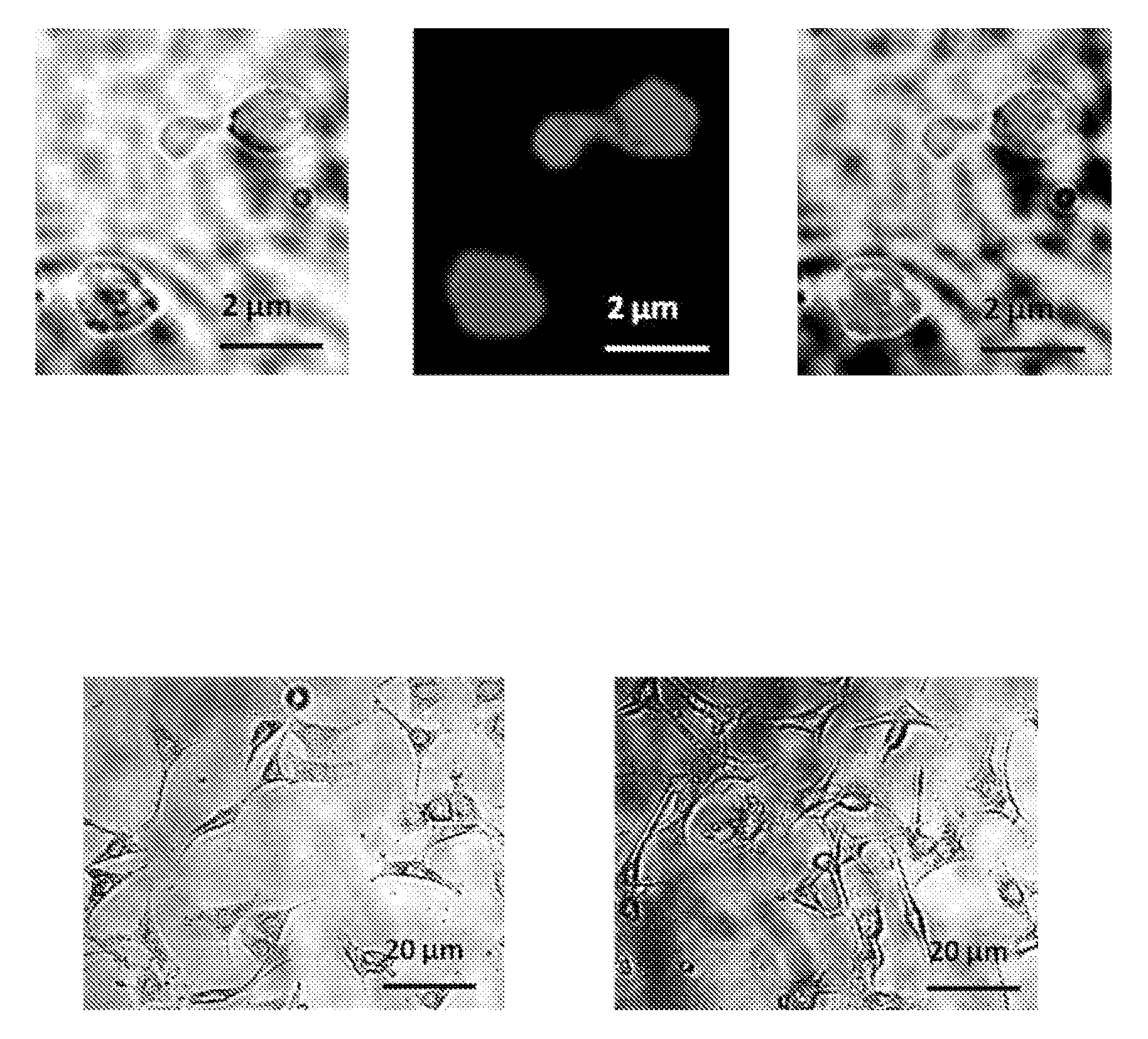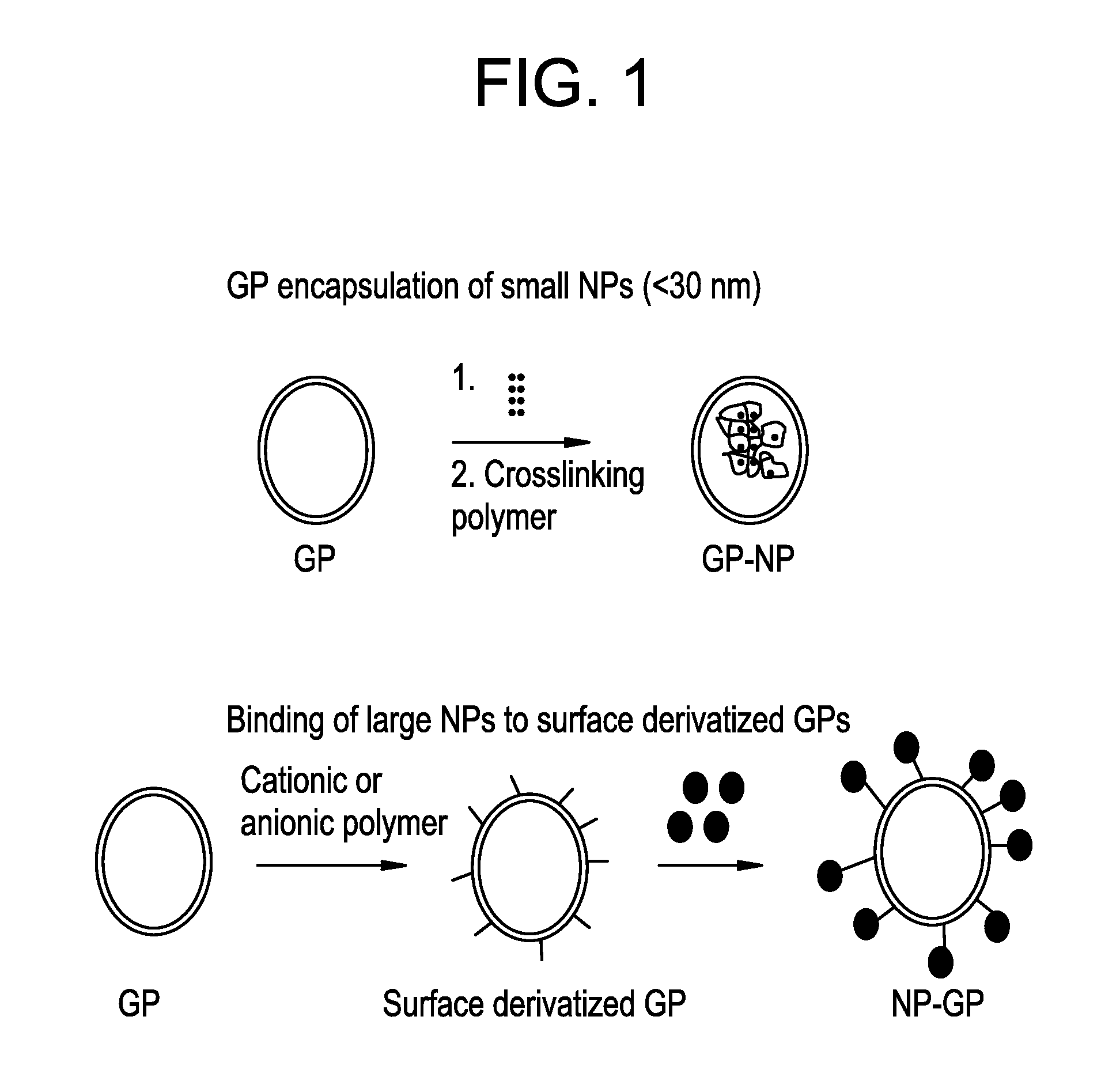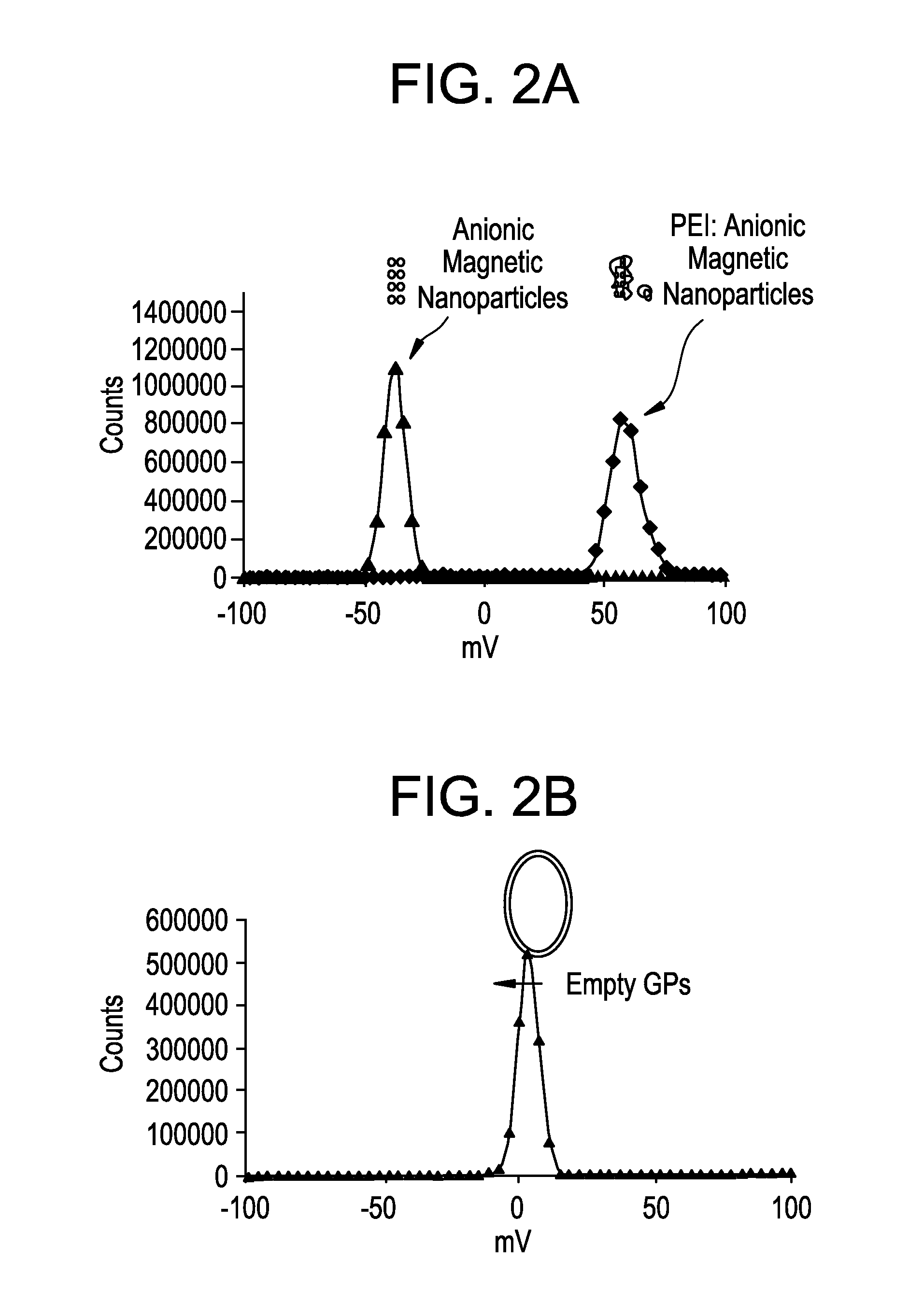Yeast cell wall particles for receptor-targeted nanoparticle delivery
a technology of receptor-targeted nanoparticles and yeast cells, which is applied in the direction of genetic material ingredients, instruments, microcapsules, etc., can solve the problems of limited technology, manufacturing challenges, and small size of yeast cells, and achieve effective drug delivery systems
- Summary
- Abstract
- Description
- Claims
- Application Information
AI Technical Summary
Problems solved by technology
Method used
Image
Examples
example 1
Test Ability of Biotinylated Qdots to Bind to Biotinylated YGP Surface and to GP Encapsulated Biotinylated Nanocores
[0181]Experiments were conducted to test the ability of loading quantum dots (CDSe / ZnS quantum dots) into GP by affinity trapping or on the surface of the shell using biotin and streptavidin affinity interactions.
[0182]To prepare YGP tRNA / PEI-biotin cores, 1 mg of YGP was mixed with 6 μL 10 mg / mL yeast RNA (Sigma), and incubated 2 hours at room temperature. Then 250 μL of 0.1% PEI biotin was added and the particles allowed to swell for 30 min, then sonicated and incubated 1 hour at room temperature. The particles were collected by centrifugation, washed three times with 500 μL 0.9% saline and resuspended in 500 μL PBS. The particles were sonicated, particle number counted using a hemacytometer, a 1×10+8 / mL suspension prepared in PBS and stored frozen at −20C.
[0183]To bind streptavidin Q-Dots to YGP-biotin shells and YGP tRNA / PEI-biotin cores PBS, particles and Qdots we...
example 2
Loading of GP with Magnetic Nanoparticles
[0186]Experiments were conducted to show that magnetic NPs could be loaded into or onto GPs. To make GP formulations loaded with magnetic nanoparticles tubes containing 1 mg or 100 mg of empty GPs were loaded with 5 μL of magnetic Nanoparticles / mg GP. Cationic 10 nm magnetic nanoparticles (EMG 607) or anionic 10 nm magnetic nanoparticles (EMG 707) were loaded (Ferrotec, Bedford, N.H.). Following incubation for 2 hr at room temperature tubes were frozen and lyophilized. A water push reaction was carried out with 5 μl water / mg GPs at room temperature for >1 hours. The tubes were then frozen and lyophilized, and contents resuspended in 70% ethanol for 15 minutes. Free nanoparticles were separated from GP magnetic nanoparticles by centrifugation and supernatants were collected and optical density measured to determine unencapsulated magnetic nanoparticles. The 70% ethanol washing steps were repeated twice and the pellets lyophilized. The pellets ...
example 3
GP Trapping of Au / MUA Nanoparticles
[0189]Gold nanoparticles coated with NanoXact™ Gold nanoparticles from Nanocomposix (San Diego, Calif.) (Table 3; 250 uL, 0.02 mg Au / mL) were incubated with 11-mercaptoundecanoic acid (MUA, 110 uL of a 0.6 mg / mL solution). The final volume was adjusted to 500 uL with 0.01 M NaOH. The samples were then incubated overnight at room temperature. The MUA derivatized gold nanoparticles (Au / MUA) were centrifuged for 20 min at 10000 rpm. The supernatant was carefully removed and the pellets were washed twice with 1 mM NaCl. The washed pellets were resuspended in 250 uL of 1 mM NaCl and OD measurement at 525 nm was used to calculate % of nanoparticle recovery.
TABLE 3TubeAu NP size1Au 10 nm2Au 30 nm3Au 40 nm4Au 50 nm5Au 100 nm
[0190]GP Loading of Au / MUA Nanoparticles—
[0191]Empty glucan particles were mixed with Au / MUA nanoparticles (5 uL of nanoparticle suspension / mg GP) as indicated in Table 4. The pellet was mixed and incubated at room temperature for 1 hou...
PUM
| Property | Measurement | Unit |
|---|---|---|
| diameter | aaaaa | aaaaa |
| diameter | aaaaa | aaaaa |
| diameter | aaaaa | aaaaa |
Abstract
Description
Claims
Application Information
 Login to View More
Login to View More - R&D
- Intellectual Property
- Life Sciences
- Materials
- Tech Scout
- Unparalleled Data Quality
- Higher Quality Content
- 60% Fewer Hallucinations
Browse by: Latest US Patents, China's latest patents, Technical Efficacy Thesaurus, Application Domain, Technology Topic, Popular Technical Reports.
© 2025 PatSnap. All rights reserved.Legal|Privacy policy|Modern Slavery Act Transparency Statement|Sitemap|About US| Contact US: help@patsnap.com



